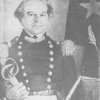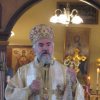Immigration of the Serbs to America
The history of American immigration by Serbs can be divided into two periods: 'early immigration' from 1820, when the immigration of immigrants was introduced, until 1880, and 'later immigration' after 1880.
Emigration for the Serbs was not a question of the economic penetration of other countries but of moving from an overpopulated countryside to the towns, though the often insurmountable obstacles of foreign language and customs hampered transformation from peasant to urban dweller. Generally, immigrants would settle in groups from the same districts, clan or province, which made it easier for them upon arrival to find their first accommodations and employment. Along the same lines, they would set up mutual-aid and cultural societies, though if they came from different places, they would vie for precedence in provincial exclusivity, exaggerating and preserving their distinctive features. In many ways they were very different: some from free Montenegro and a few from Serbia, others from Croatia, still others from Banat and Bačka, from Bosnia and Herzegovina and Macedonia, from the Bay of Kotor and Dalmatia. Their entire life was focused on the limited area between factory or mine and their small community. From this narrow circle of people came ail their comforts and joys of life, but also quarrels and enmity, the only place where personalities and ambitions could take shape, where wounded pride and arrogance found release. Over the years they often came into contact with fewer people than in their old-country villages. If an individual began to climb the social ladder, he could do it only at the expense of his relatives and countrymen, for whom he became a leader and protector, rather like the headman in the village he had left. Immigrants from the Serbia of Prince Miloš Obrenović, even a hundred years after his death, spread across the continent, beneath the cruel fist of big industry and exposed to the single cauldron of Americanization, melting and molding something new.
About this initial period of immigration one can learn most from the stories of the oldest immigrants, from the accounts of different periods and places and from memoirs published in various newspapers. Just before the last war, Jovo Marie from Gary, Indiana began to publish in the American Srbobran a series of articles entitled "Pioneer", actually his autobiography from the day he arrived in the United States. Here one finds the first immigrants walking in apostolic fashion from place to place, taking on whatever work they could find, twenty or so living together bed by bed in shacks and barns where sometimes the companies paid their board. Frequently they did their own cooking, especially if they were living in isolated railway cars. Again and again they changed jobs and places, drawn onward to new factories, where a dozen of them would rent a small wooden house and set up housekeeping, establish their own house rules, a duty roster for cleaning, washing and heating much like an extended family in the Old Country. As soon as they saved up enough money and learned a little English, they would leave these communities, marry the daughters of earlier immigrants, or summon young women from the Old Country, to start their own families.
.




